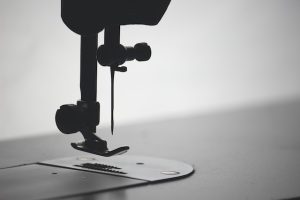How to Make Latex Clothes

Are you passionate about fashion and interested in creating your own unique garments? If so, why not try making latex clothes from latex sheeting? In this article, we’ll guide you through the step-by-step process of crafting latex clothing from start to finish. With the right materials and a little creativity, you’ll be able to design and construct stunning latex garments that perfectly fit your style and body. Get ready to unleash your inner fashion designer and explore the exciting world of latex clothing creation.
Introduction To Making Your Own Latex Clothing
If you’re passionate about fashion and love the sleek and shiny look of latex clothing, why not try making your own? Creating latex clothes from latex sheeting allows you to express your creativity and tailor garments to your exact measurements. In this article, we’ll guide you through the step-by-step process of making latex clothes from latex sheeting, ensuring you have all the information you need to embark on this exciting DIY project.

Steps in making latex clothes from latex sheets
Materials Needed For Making Latex Clothing
To get started with making latex clothes from latex sheeting, gather the following materials:
- Latex sheeting in the desired colour and thickness
- Pattern paper
- Scissors
- Latex adhesive
- Latex shiner
- Measuring tape
- Pen or marker
- Optional: Mold-making material
Creating a Pattern
The first step in making latex clothes is creating a pattern. This ensures that the garment will fit properly and reflect your desired design. Follow these steps to create a pattern:
- Measure your body: Take accurate measurements of your body or the person the garment is intended for. Use a measuring tape to measure the bust, waist, hips, and other relevant areas.
- Select pattern paper: Choose pattern paper or any large, sturdy paper that can withstand tracing and cutting.
- Outline the desired garment: Using a pen or marker, draw the outline of the desired garment based on the measurements taken. Make sure to include details such as seams, darts, and any design elements you want to incorporate.
- Add markings: Mark key points on the pattern, such as the center front, center back, and shoulder points. This will help align the pattern accurately during assembly.
- Cut out the pattern: Carefully cut out the pattern along the traced lines. Use scissors or a craft knife for clean edges.
By following these steps, you will have a custom pattern ready to create your latex garment.

Tips on making latex clothes
Key Activities in Making the Desired Pattern for Making Latex Clothing
- Measure your body or the intended wearer’s body accurately to ensure a proper fit.
- Use pattern paper or large, sturdy paper to create the pattern.
- Draw the outline of the desired garment on the pattern paper, incorporating design elements and details.
- Include markings on the pattern to help with alignment during assembly.
- Cut out the pattern carefully using scissors or a craft knife.
Making Clothes with Latex Vs Making Traditional Clothes
| Traditional Sewing | Latex Clothing Making |
| Uses fabric and thread to construct garments. | Utilizes latex sheeting and adhesive for assembly. |
| Requires sewing skills and equipment. | Relies on bonding latex pieces with adhesive. |
| Allows for a wide range of fabric choices. | Offers a unique, skin-tight fit and a shiny appearance. |
| Sewn seams can be altered or adjusted easily. | Latex seams are durable and provide a strong bond. |
| Can be time-consuming, depending on the complexity of the garment. | Drying and curing time required for latex garments. |
| Requires a sewing machine or hand sewing skills. | No sewing machine necessary; primarily involves cutting and bonding. |
In summary, creating a pattern is the crucial first step in making latex clothes from latex sheeting. By accurately measuring and tracing the desired garment outline, you’ll set the foundation for a well-fitting and beautifully designed latex creation. So grab your pattern paper, measurements, and let your imagination run wild as you embark on this exciting journey of crafting your very own latex clothing.

picking the right glue for making latex clothing
Cutting the Latex Sheets
Cutting the latex sheets is an essential step in making latex clothes from latex sheeting. Once you have your pattern ready, you can proceed with the following steps to cut out the latex pieces:
- Prepare the workspace: Clear a flat surface and ensure you have enough room to lay out the latex sheeting and pattern.
- Lay the pattern on the latex sheeting: Place the pattern on the latex sheeting, making sure it is aligned properly. Secure the pattern with weights or tape to prevent it from shifting during the cutting process.
- Trace the outline: Using a pen or marker, trace the outline of the pattern onto the latex sheeting. Follow the lines precisely to ensure accurate cuts.
- Cut out the latex pieces: Carefully use sharp scissors to cut along the traced lines on the latex sheeting. Take your time and make clean, smooth cuts to achieve professional-looking results.
- Mirror the pieces: For parts of the garment that require symmetry, such as sleeves, remember to cut mirrored pieces. Flip the pattern and trace it onto another section of the latex sheeting, then cut out the mirrored piece.
By following these steps, you will have accurately cut latex pieces that are ready for the next stage of garment assembly.
Cutting Latex Sheets for Latex Clothing Step by Step Guide:
- Prepare a clear, flat workspace for cutting the latex sheets.
- Lay the pattern on the latex sheeting, ensuring proper alignment.
- Trace the pattern outline onto the latex sheeting using a pen or marker.
- Carefully cut along the traced lines with sharp scissors.
- Take your time and make clean, smooth cuts for professional results.
- Mirror the pattern for parts that require symmetry, such as sleeves.
Cutting Latex Cloth Vs Cutting Traditional Fabric
| Traditional Fabric Cutting | Latex Sheet Cutting |
| Uses scissors or rotary cutters to cut fabric pieces. | Requires cutting latex sheeting using sharp scissors. |
| Follows fabric grain lines for proper drape and fit. | Cuts latex sheeting based on traced pattern lines. |
| Can use various cutting techniques depending on fabric type. | Requires precise cutting to achieve accurate latex pieces. |
| May involve pinning fabric layers together for cutting multiple pieces. | Single layer cutting of latex sheeting for individual pieces. |
| Can be adjusted or modified during the cutting process. | Latex sheeting cuts are final and not easily adjustable. |
| Fabric edges may require finishing techniques to prevent fraying. | Latex sheeting edges typically do not fray and may not require additional finishing. |
In summary, cutting the latex sheets is a crucial step in the process of making latex clothes from latex sheeting. By tracing the pattern onto the latex sheeting and cutting along the lines accurately, you ensure that the resulting latex pieces will fit together perfectly during the assembly process. Take your time, be precise, and enjoy the creative journey of making your own latex garments.
Assembling the Pieces
Lay out the cut latex pieces on a clean and flat surface. Begin assembling the garment by joining the pieces together. Apply a thin, even layer of latex adhesive along the edges that need to be bonded and press the pieces firmly together. Take care not to use too much adhesive to avoid excess seepage.
Choosing the Right Adhesive Glue for Making Latex Clothing
Consider the following factors when selecting an adhesive glue for making latex clothing:
- Latex Compatibility: Ensure the adhesive is specifically designed for bonding latex materials. Using an incompatible glue may result in weak bonds or damage to the latex.
- Strength and Flexibility: Look for an adhesive that provides a strong and flexible bond. Latex clothing requires flexibility to accommodate movement, so the adhesive should withstand stretching and bending.
- Drying Time: Consider the drying time of the adhesive. Some glues dry quickly, allowing for efficient assembly, while others require longer drying periods. Choose an adhesive that suits your workflow and the complexity of your garment.
- Toxicity and Fume Levels: Take into account the toxicity and fume levels of the adhesive. Opt for adhesives that are non-toxic and emit minimal fumes, ensuring a safe working environment.
- Ease of Application: Consider the ease of application. Look for adhesives that come with applicators or brushes for precise and controlled application. Some adhesives may require additional tools for spreading evenly.
- Clear or Colored: Decide whether you prefer a clear adhesive that won’t be visible on the finished garment or a colored adhesive that matches the latex color.
Tips for Choosing the Right Glue to Making Latex Clothing at Home
- Consider latex compatibility, strength, flexibility, drying time, toxicity, and ease of application when choosing adhesive glue.
- Look for an adhesive specifically designed for bonding latex materials.
- Choose an adhesive that provides a strong and flexible bond to withstand stretching and movement.
- Consider the drying time of the adhesive to align with your workflow and garment complexity.
- Prioritize non-toxic adhesives with minimal fume emission for a safe working environment.
- Evaluate the ease of application and opt for adhesives with applicators or brushes for precise usage.
- Decide whether a clear or colored adhesive best suits your preferences.

Which glue to use for making latex clothing
Comparing the Different Types of Latex Glue for Making Latex Clothing
| Adhesive Type | Latex Compatibility | Strength | Flexibility | Drying Time | Toxicity | Ease of Application | Visibility |
| Latex Adhesive | High | Strong | Flexible | Quick | Low | Applicator or Brush | Clear |
| Contact Cement | High | Strong | Flexible | Moderate | Low | Applicator | Clear |
| Silicone Adhesive | Medium | Moderate | Flexible | Slow | Low | Applicator or Brush | Clear |
| E6000 Adhesive | Low | Moderate | Flexible | Moderate | Low | Applicator | Clear |
| Rubber Cement | Low | Moderate | Flexible | Quick | Low | Brush | Clear |
| Fabric Glue | Low | Low | Limited Flexibility | Quick | Low | Applicator or Brush | Clear |
| Super Glue | Low | Strong | Limited Flexibility | Quick | Low | Applicator or Brush | Clear |
In summary, choosing the right adhesive glue is crucial when making latex clothing. Consider factors such as latex compatibility, strength, flexibility, drying time, toxicity, ease of application, and visibility. By selecting the appropriate adhesive for your project, you can ensure strong, durable, and visually appealing bonds between latex pieces, resulting in high-quality latex garments that are built to last.
Applying Latex Adhesive
Applying latex adhesive is a crucial step in making latex clothing. It reinforces the seams and creates a stronger bond between latex pieces. Here’s a comprehensive guide to help you apply latex adhesive effectively:
Steps for Applying Latex Adhesive
Follow these steps to apply latex adhesive and reinforce the seams of your latex garment:
- Prepare the workspace: Ensure you have a clean and well-ventilated area to work in. Latex adhesive can emit fumes, so adequate ventilation is important.
- Check the adhesive compatibility: Ensure the latex adhesive you are using is compatible with your specific type of latex sheeting. Different adhesives work best with specific latex formulations.
- Apply the first layer of adhesive: Begin by applying a thin, even layer of latex adhesive along the edges that need to be bonded. Use a brush or an applicator provided with the adhesive for precise application.
- Press the pieces together: After applying the adhesive, carefully align the latex pieces and press them together. Ensure the edges are aligned properly for a clean and seamless seam.
- Apply a second layer of adhesive: To reinforce the bond and provide additional durability, apply a second layer of latex adhesive along the inside of the garment, directly over the seam. This will help prevent leaks and strengthen the bond between the latex pieces.
- Allow for proper drying: Allow the adhesive to dry completely according to the manufacturer’s instructions. This typically takes several hours, but drying times may vary depending on the adhesive and environmental conditions.
By following these steps, you can ensure a secure and long-lasting bond between the latex pieces of your garment.

Creating a pattern for making latex clothing
Step by Step Guide to Applying Adhesive to Latex Clothing
- Prepare a clean and well-ventilated workspace for applying latex adhesive.
- Check the compatibility of the adhesive with your specific type of latex sheeting.
- Apply a thin, even layer of adhesive along the edges that need to be bonded.
- Press the latex pieces together, ensuring proper alignment.
- Apply a second layer of adhesive along the inside of the garment to reinforce the bond.
- Allow the adhesive to dry completely according to the manufacturer’s instructions.
Different Types of Latex Adhesive Guide:
| Latex Adhesive | Compatibility with Latex Sheet | Bond Strength | Leaks Prevention | Drying Time |
| Latex Glue | High | Strong | Excellent | Several hours |
| Rubber Cement | Medium | Moderate | Good | Quick |
| Contact Cement | High | Strong | Excellent | Moderate |
| Silicone Adhesive | Medium | Moderate to Strong | Good to Excellent | Slow |
| E6000 Adhesive | Low | Moderate | Moderate | Moderate |
In summary, applying latex adhesive is an essential step in making latex clothing. By carefully following the steps outlined and using the right adhesive, you can reinforce the seams of your latex garment and create a strong bond between the latex pieces. This reinforcement enhances durability and helps prevent leaks, ensuring a high-quality finished product. Allow the adhesive to dry completely according to the manufacturer’s instructions to achieve the best results.
Drying and Curing
Drying and curing your latex garment is a crucial step in the process of making latex clothing. After applying the adhesive, you need to allow sufficient time for it to dry and cure properly. Follow these guidelines to ensure the best results:
Drying and Curing Process
To effectively dry and cure your latex garment, follow these steps:
- Hang the garment in a well-ventilated area: Find a clean and well-ventilated space where you can hang the garment. This will allow proper air circulation for drying and curing.
- Ensure the area is free from dust and debris: Make sure the area where you hang the garment is clean and free from dust or debris that could stick to the adhesive.
- Avoid exposure to direct sunlight: Keep the garment away from direct sunlight, as prolonged exposure to sunlight can cause discoloration and damage to the latex material.
- Consider the thickness of the latex: Thicker latex garments generally take longer to dry and cure compared to thinner ones. Be patient and allow ample time for the adhesive to fully set.
- Follow the manufacturer’s instructions: Different adhesives may have specific drying and curing requirements. Refer to the instructions provided by the adhesive manufacturer for the recommended drying time.
- Check for complete dryness: To ensure the garment is fully dry, gently touch the adhesive areas. If they feel tacky or sticky, the garment needs more time to dry. Wait until the adhesive is completely dry before moving on to the next step.
It’s important to note that the drying time can vary depending on various factors such as ambient conditions, humidity levels, and the specific adhesive used. Therefore, it’s crucial to exercise patience and allow sufficient time for the garment to dry and cure properly.
Key Steps in Drying and Curing Home Made Latex Clothing
- Hang the garment in a well-ventilated area for drying and curing.
- Ensure the area is clean and free from dust and debris.
- Avoid exposing the garment to direct sunlight.
- Consider the thickness of the latex, as it can affect the drying time.
- Follow the adhesive manufacturer’s instructions for recommended drying time.
- Check for complete dryness by gently touching the adhesive areas.
Different Drying and Curing Times for Different Latex Adhesives
| Latex Adhesive | Drying Time | Curing Time |
| Latex Glue | 24-48 hours | 48-72 hours |
| Rubber Cement | 12-24 hours | 24-48 hours |
| Contact Cement | 24-48 hours | 48-72 hours |
| Silicone Adhesive | 48-72 hours | 72-96 hours |
| E6000 Adhesive | 12-24 hours | 24-48 hours |
In summary, drying and curing your latex garment is a critical step to ensure the adhesive sets properly and the garment maintains its shape and durability. Hang the garment in a well-ventilated area, away from direct sunlight, and allow sufficient time for the adhesive to dry completely. Be mindful of the thickness of the latex and follow the specific instructions provided by the adhesive manufacturer. Once the garment is fully dry, you can proceed to the next steps with confidence.

Why make your own latex clothing
Removing the Garment from the Mold (Optional)
If you’re using a mold to shape your latex clothes, carefully remove the garment from the mold once it has fully dried and cured. Gently peel the latex away from the mold to avoid any tears or damages. If you’re not using a mold, you can skip this step.
Finishing Touches
After drying and curing your latex garment, it’s time to add the finishing touches. This step involves inspecting the garment for any imperfections, trimming excess latex, and applying a latex shiner for a polished and glossy finish. Here’s how to complete the final steps of your latex clothing-making process:
Inspecting and Trimming
- Inspect for imperfections: Carefully examine the garment for any rough edges, bumps, or excess latex. Use your fingers to feel for any inconsistencies or irregularities in the seams.
- Trim excess latex: Use sharp scissors to trim away any excess latex along the edges. This step helps create clean and polished edges, ensuring a professional finish to your garment.
Applying Latex Shiner
- Prepare the garment: Make sure the garment is clean and free from dust or debris before applying the latex shiner.
- Read the instructions: Refer to the instructions provided with the latex shiner to understand the recommended application method and quantity.
- Apply the latex shiner: Using a clean cloth or sponge, apply a small amount of latex shiner to the exterior surface of the garment. Gently rub or buff the shiner into the latex, covering the entire surface.
- Even application: Ensure an even application of the latex shiner, paying attention to any creases or folds in the latex. This will give the garment a consistent glossy finish.
- Allow drying time: Let the latex shiner dry completely before wearing or storing the garment. Follow the manufacturer’s instructions for the recommended drying time.
By completing these finishing touches, you can enhance the overall appearance of your latex garment and give it a professional and eye-catching shine.

How to design latex clothing to make at home
Step by Step Guide to Inspecting and Trimming Home Made Latex Clothing
- Inspect the garment for imperfections such as rough edges or excess latex.
- Trim away any excess latex using sharp scissors for clean and polished edges.
- Ensure the garment is clean and free from dust or debris before applying the latex shiner.
- Follow the instructions provided with the latex shiner for application method and quantity.
- Apply the latex shiner using a clean cloth or sponge, covering the entire surface of the garment.
- Ensure an even application, paying attention to creases or folds in the latex.
- Allow the latex shiner to dry completely before wearing or storing the garment.
Inspecting and Trimming Steps for Making Latex Clothing
| Finishing Process | Purpose | Tools/Products Required |
| Inspecting and Trimming | Identifying and removing imperfections and excess latex | Scissors |
| Applying Latex Shiner | Enhancing the appearance and providing a glossy finish | Latex shiner, cloth/sponge |
In summary, the finishing touches of inspecting, trimming, and applying a latex shiner play a significant role in perfecting your latex garment. By carefully inspecting for imperfections and trimming excess latex, you create a clean and polished look. Applying a latex shiner adds a glossy finish that enhances the visual appeal of the garment. With attention to detail and the right tools, your latex clothing will be ready to make a stylish statement.
Cleaning and Maintenance
Proper Cleaning and maintaining latex clothes is crucial for ensuring their longevity and preserving their quality. By following the right steps, you can keep your latex garments in excellent condition. Here are some guidelines to help you with the cleaning and maintenance process:
Cleaning Process:
- After each use, gently wash the latex garment using mild soap and lukewarm water. This will help remove any dirt, oils, or sweat accumulated on the surface.
- Avoid using harsh chemicals, such as bleach or solvents, as they can damage the latex material. Stick to mild, non-abrasive soaps specifically designed for delicate fabrics.
- Gently rub the soapy water over the surface of the garment, paying attention to any areas that require extra cleaning.
- Rinse the garment thoroughly with lukewarm water to remove all traces of soap.
- Pat dry the latex garment using a soft, absorbent towel. Avoid wringing or twisting the material, as it can cause deformation.
- Allow the garment to air dry completely before storing it.
Maintenance Tips:
- Store your latex clothes in a cool, dry place away from direct sunlight. Excessive heat or sunlight can lead to discoloration and degradation of the material.
- Avoid folding or creasing the latex garments for extended periods, as this can cause permanent creases or wrinkles. Instead, hang them in a closet or use specialized garment hangers to maintain their shape.
- Apply a light coating of talcum powder or silicone-based lubricant to the inside of the latex garment before storing it. This helps prevent sticking and keeps the material supple.
- Regularly inspect your latex clothes for any signs of damage, such as tears, holes, or thinning areas. Promptly repair any minor issues to prevent further damage.
Cleaning and Maintenance of Latex Clothing
| Cleaning and Maintenance | Latex Clothes |
| Cleaning Method | Gentle wash with mild soap and lukewarm water |
| Avoid Harsh Chemicals | Use mild, non-abrasive soaps designed for delicate fabrics |
| Drying | Air dry completely before storing |
| Storage | Cool, dry place away from direct sunlight |
| Folding or Creasing | Avoid extended periods of folding or creasing |
| Lubrication | Apply talcum powder or silicone-based lubricant before storing |
| Regular Inspection | Check for signs of damage and repair promptly |
By following these cleaning and maintenance practices, you can ensure that your latex clothes remain in excellent condition, allowing you to enjoy them for an extended period of time.

Steps in making latex clothing
YouTube Guides to Making Latex Clothing
Making your own latex clothing can be a creative and rewarding endeavor. Whether you’re interested in cosplay, fetish fashion, or simply enjoy the unique properties of latex, YouTube is a fantastic resource for learning the skills and techniques required. There are several talented YouTubers who specialize in creating content related to making latex clothing. Below is a list of some notable channels and creators to check out:
- Morgan Donner Making Latex Clothing: Morgan Donner shares her expertise in various costume and fashion-related topics, including latex clothing tutorials.
- Celene Nox: Celene Nox provides step-by-step guides and tips for making latex clothing, with a focus on unique and eye-catching designs.
- Letitia Delish: Letitia Delish offers insightful videos on making latex clothing, covering everything from pattern drafting to assembly techniques.
- Whiteout Rubber: Whiteout Rubber is a channel dedicated to the art of latex clothing making, featuring tutorials and demonstrations for different garments.
- Mr Doo: Mr Doo shares his passion for creating latex clothing through detailed tutorials, showcasing both beginner-friendly and advanced techniques.
- LacrymMastory: LacrymMastory’s channel explores the world of latex fashion, featuring tutorials and behind-the-scenes looks at the creation process.
- Vicky Devika: Vicky Devika provides a mix of latex clothing tutorials and vlogs, offering insights into her creative journey and inspirations.
- Catasta Charisma: Catasta Charisma specializes in latex clothing tutorials, ranging from basic techniques to more complex projects.
- Euro Catsuits: Euro Catsuits focuses on the creation of catsuits and other latex garments, with detailed tutorials for enthusiasts of all skill levels.
- MJTrends: MJTrends offers a wide range of resources for latex enthusiasts, including tutorials, product reviews, and fabric information.
- Hayley Evans Filmmaker: Hayley Evans Filmmaker not only shares her experiences in the world of latex clothing but also provides informative tutorials for aspiring creators.
- Maggy Cosplay: Maggy Cosplay combines her passion for cosplay and latex fashion, showcasing her creative process and offering helpful tips along the way.
- Nason Tacket: Nason Tacket’s channel includes tutorials on various aspects of making latex clothing, from pattern creation to finishing touches.
- Neptune Six: Neptune Six explores the realm of latex clothing with tutorials, vlogs, and insights into the creative process.
- Mia Maples: Mia Maples occasionally features latex clothing tutorials alongside her broader content, catering to those interested in fashion and DIY projects.
- Skin Two: Skin Two is a long-standing magazine dedicated to latex and alternative fashion, offering a mix of tutorials, interviews, and fashion showcases.
The following table provides a quick overview and comparison of the mentioned YouTubers who make videos on making latex clothing:
| YouTuber | Content Focus | Skill Level |
|---|---|---|
| Morgan Donner | Latex clothing tutorials | Beginner to advanced |
| Celene Nox | Unique and eye-catching designs | Intermediate |
| Letitia Delish | Pattern drafting and assembly techniques | Intermediate |
| Whiteout Rubber | Latex clothing tutorials | Beginner to advanced |
| Mr Doo | Detailed latex clothing tutorials | Beginner to advanced |
| LacrymMastory | Latex fashion tutorials | Beginner to advanced |
| Vicky Devika | Latex clothing tutorials and vlogs | Beginner to intermediate |
| Catasta Charisma | Basic to complex latex clothing tutorials | Beginner to advanced |
| Euro Catsuits | Catsuit and latex garment tutorials | Beginner to advanced |
| MJTrends | Latex tutorials, product reviews, and fabric info | Beginner to advanced |
| Hayley Evans Filmmaker | Latex clothing tutorials and insights | Beginner to intermediate |
| Maggy Cosplay | Cosplay and latex fashion tutorials | Beginner to intermediate |
| Nason Tacket | Various aspects of making latex clothing | Beginner to advanced |
| Neptune Six | Latex clothing tutorials, vlogs, and insights | Beginner to advanced |
| Mia Maples | Fashion and DIY projects, occasional latex tutorials | Beginner to intermediate |
| Skin Two | Latex and alternative fashion tutorials and showcases | Beginner to advanced |
These YouTubers provide a wealth of knowledge and inspiration for anyone interested in making latex clothing. Whether you’re a beginner looking to learn the basics or an experienced creator seeking new techniques, their tutorials and content will guide you through the process, helping you bring your latex creations to life.
Books on Making Latex Clothes
If you prefer learning through books rather than videos, there are a few notable titles available that delve into the art of making latex clothes. These books provide comprehensive guides, tips, and techniques for creating your own latex garments. Here are two recommended books on making latex clothes:
- “Making Latex Clothes” by Sian-Kate Mooney: This book offers a detailed exploration of the process of making latex clothes. It covers various topics such as pattern drafting, cutting, gluing, and finishing techniques. Sian-Kate Mooney provides step-by-step instructions accompanied by clear illustrations, making it easier for beginners to follow along and create their own latex garments.
- “How to make latex clothes?: Making your own latex clothing yourself, fun to do and easier than you think!” by Amber Reijmers: Amber Reijmers’ book aims to demystify the process of making latex clothes, emphasizing that it is an enjoyable and accessible craft. It covers the basics of working with latex, including pattern making, cutting, and assembly techniques. The book also provides tips for troubleshooting common issues and offers creative ideas for designing your own unique latex creations.
Here is a brief comparison table highlighting key details about the two books on making latex clothes:
| Book Title | Author | Focus | Skill Level |
|---|---|---|---|
| Making Latex Clothes | Sian-Kate Mooney | Comprehensive latex garment making guide | Beginner to advanced |
| How to make latex clothes? | Amber Reijmers | Beginner-friendly introduction to making latex clothes | Beginner |
Both books offer valuable insights into making latex clothes, catering to different skill levels. “Making Latex Clothes” by Sian-Kate Mooney is a comprehensive guide suitable for beginners and more experienced crafters, while “How to make latex clothes?: Making your own latex clothing yourself, fun to do and easier than you think!” by Amber Reijmers focuses on providing a beginner-friendly introduction to the craft. Whether you’re new to working with latex or looking to expand your skills, these books serve as excellent resources to help you explore and create your own latex garments.
What is the Best Thickness of Latex Sheets for Making Latex Clothes?
When it comes to making latex clothes, the thickness of the latex sheet is an important consideration. The right thickness can ensure a comfortable fit, durability, and the desired aesthetic appearance. However, determining the best thickness for latex sheets can depend on several factors, including the specific garment, personal preference, and the intended use. Let’s explore this topic further.
Factors to consider when choosing the thickness of latex sheets for making latex clothes:
- Comfort: Thicker latex sheets offer more rigidity and support, which may be preferred for certain garments like corsets or body suits. Thinner sheets provide greater flexibility and freedom of movement, suitable for items like gloves or stockings.
- Durability: Thicker latex sheets tend to be more durable and less prone to tearing or puncturing. For garments that will be subjected to rigorous use or stretching, such as latex leggings or catsuits, thicker sheets (around 0.4mm – 0.6mm) are generally recommended.
- Transparency: Thinner latex sheets are more translucent, allowing for a see-through effect. If transparency is desired for garments like lingerie or provocative clothing, sheets ranging from 0.2mm – 0.4mm might be suitable.
- Aesthetic appearance: Thicker latex sheets can provide a sleek and polished look, while thinner sheets offer a more form-fitting and revealing appearance. The choice of thickness should align with the desired aesthetic appeal of the garment.
Comparison Table for different latex sheet thicknesses:
| Thickness Range | Recommended Use |
| 0.2mm – 0.4mm | Lingerie, provocative clothing |
| 0.4mm – 0.6mm | Corsets, body suits, leggings, catsuits |
| 0.6mm – 1.0mm | Heavy-duty garments, jackets, outerwear |
Note: These are general recommendations, and personal preference may vary. It is advisable to experiment with different thicknesses to find the optimal choice for individual projects.
In conclusion, the best thickness of latex sheets for making latex clothes depends on factors such as comfort, durability, transparency, and aesthetic appearance. It’s essential to consider the specific garment and its intended use when selecting the appropriate thickness. By carefully evaluating these factors and experimenting with different thicknesses, you can create latex clothes that meet your desired specifications.
Summary of Making Latex Clothing
Making Creating latex clothes from latex sheeting is a wonderful way to express your creativity and design unique garments that reflect your personal style. By following the step-by-step process outlined in this article, you’ll have the knowledge and skills to embark on your latex clothing-making journey with confidence. Here’s a recap of the key points discussed:
- Material Selection: Choose high-quality latex sheeting in the desired thickness and color for your garments.
- Pattern Making: Create or acquire patterns that suit your design ideas and measurements. Consider using paper or muslin to make test garments for fitting.
- Cutting and Marking: Transfer the pattern onto the latex sheeting and carefully cut out the fabric pieces. Use chalk or tailor’s pens to mark any necessary guidelines or notations.
- Assembly: Join the fabric pieces together using a specialized latex adhesive or by using a sewing machine with a stretch stitch. Take care to align the edges and maintain consistent tension.
- Reinforcement: Strengthen critical areas, such as seams, with latex strips or patches. This will provide additional support and prevent tearing.
- Finishing Touches: Trim any excess material, smooth out seams, and consider adding decorative elements such as zippers, buckles, or embellishments.
- Cleaning and Maintenance: After wearing your latex clothes, gently wash them with mild soap and lukewarm water. Avoid harsh chemicals and allow them to air dry before storing in a cool, dry place away from direct sunlight.
Remember, the process of making latex clothes requires patience, attention to detail, and practice. Don’t be discouraged if your first attempts aren’t perfect—each garment you create will help you refine your skills and techniques.
Steps in Latex Clothing Making:
| Steps in Latex Clothing Making |
| Material Selection |
| Pattern Making |
| Cutting and Marking |
| Assembly |
| Reinforcement |
| Finishing Touches |
| Cleaning and Maintenance |
By following these steps and practicing, you’ll be able to create stunning latex garments that reflect your unique style. Enjoy the rewarding experience of wearing your handmade creations and showcase your individuality through the art of latex clothing-making.
FAQs on Making Latex Clothing
Are you considering delving into the fascinating world of making latex clothing? If so, you may have questions about the process. In this section, we’ve compiled a set of frequently asked questions (FAQs) to provide you with valuable insights and answers. From working without a pattern to washing and modifying latex garments, as well as considerations for latex allergies and different types of latex sheeting, these FAQs will help address your concerns and set you on the path to successful latex clothing creation.
Where can I purchase latex sheeting?
Latex sheeting can be purchased online from specialized suppliers or in some craft stores. Ensure you choose high-quality latex sheeting suitable for clothing purposes.
Can I create latex clothes without a mold?
Yes, you can create latex clothes without a mold. The mold helps shape the garment, but it’s not necessary. You can achieve good results by following the pattern and assembly steps.
How can I achieve a specific color for my latex clothes?
Latex sheeting is available in a range of colors, but if you have a specific color in mind, you can use latex paints or dyes designed for use on latex materials. Follow the instructions provided with the coloring product for best results.
Are latex clothes difficult to clean?
Cleaning latex clothes is relatively simple. Use mild soap and lukewarm water to gently clean the garment after each use. Avoid harsh chemicals and excessive scrubbing, as they can damage the latex.
Can I alter the design of the latex garment during the construction process?
Yes, you can make design modifications during the construction process. However, it’s important to plan and consider these modifications in the initial pattern to ensure a cohesive and well-fitting final garment.
In conclusion, creating latex clothes from latex sheeting is an exciting and rewarding endeavor. By following the outlined steps and using your creativity, you can craft stunning garments that are tailored to your unique style and measurements. Embrace the process, experiment with different designs, and enjoy the satisfaction of wearing your handmade latex creations.







